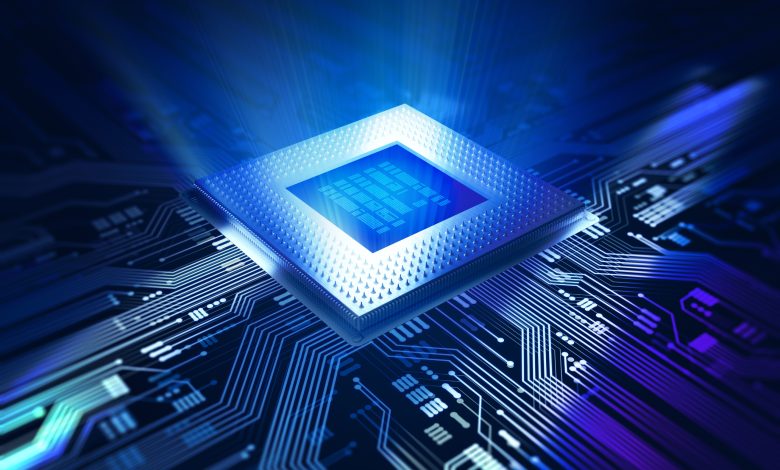The Architecture of Modern Computer CPUs

Computers have become an integral part of our daily lives, and the central processing unit (CPU) is the backbone of any computer system. The CPU is responsible for executing the instructions that make up a computer program and performing mathematical calculations. With the evolution of technology, the architecture of CPUs has undergone significant changes to accommodate the growing demands of modern computing applications. This article will discuss the architecture of modern computer CPUs, including the different components and their functions, the impact of technological advancements on CPU design, and the future direction of CPU architecture.
Components of a CPU
A CPU consists of several basic components, including the control unit (CU), arithmetic logic unit (ALU), and memory unit (MU). The control unit is responsible for fetching instructions from memory and decoding them into operations that the ALU can perform. The ALU performs mathematical operations, such as addition and subtraction, and logical operations, such as AND and OR. The memory unit stores data and instructions for the CPU to access.
Using CPU-Z Tool
CPU-Z is a freeware system information tool that provides detailed information about a computer’s CPU and other hardware components. With CPU-Z, you can obtain information about the processor, including the manufacturer, clock speed, number of cores, and cache size. Additionally, CPU-Z provides information about the motherboard, memory, and graphics card. This in-depth information on the architecture of modern CPUs can help users understand the components and technology that make up their computer systems and also provide a basis for making informed decisions about upgrading or purchasing new hardware.
When using CPU-Z, users can easily access a wealth of information about their CPU. The tool provides detailed information about the processor’s clock speed, which is the measure of how many clock cycles the processor can execute per second. The number of cores, threads, and cache size can also be viewed, providing insight into the processor’s performance and capabilities. The tool also provides information about the processor’s voltage, thermal design power (TDP), and manufacturing process.
Technological Advancements
One of the most significant technological advancements in CPU architecture is the transition from single-core to multi-core processors. In a single-core processor, all processing is performed by a single CPU. In a multi-core processor, multiple CPUs are integrated into a single chip, allowing for multiple tasks to be executed simultaneously. This has greatly increased the processing power of CPUs, making it possible for modern computers to perform multiple tasks at once.
Another significant technological advancement is the use of hyper-threading. Hyper-threading allows a single CPU core to appear as two virtual cores, increasing the CPU’s ability to execute multiple threads simultaneously. This has greatly improved the performance of multi-threaded applications, such as video editing software and 3D modeling programs.
Cache memory is another important component of modern CPU architecture. Cache memory is a high-speed memory that is used to store frequently used data and instructions. This allows the CPU to access the data more quickly, improving its overall performance. The size and speed of cache memory have also increased with technological advancements, allowing for even faster access to frequently used data.
Using CPU-Z for Overclocking
Overclocking is increasing the clock speed of a computer’s CPU beyond the manufacturer’s specified limit. One can improve performance by doing this, but it also increases the risk of damage to the processor and other hardware components. Before overclocking, it is important to understand the capabilities of your CPU and to use a tool such as CPU-Z to monitor your system’s performance.
When using CPU-Z for overclocking, users can access information about their CPU’s clock speed, voltage, and temperature. One can use this information to determine the optimal settings for overclocking, ensuring that the CPU operates within safe limits and does not become damaged. CPU Z also provides detailed information about the system’s memory and system bus, allowing users to determine the best settings for these components as well.
The Future of CPU Architecture
One of the major trends in the future of CPU architecture is the move towards heterogeneous architectures. Heterogeneous architectures incorporate different types of processing units, such as graphics processing units (GPUs) and digital signal processors (DSPs), into a single chip. By doing this, one enables a more versatile and efficient use of processing resources, as different tasks can be performed by the appropriate processing unit.
Another trend in the future of CPU architecture is the use of artificial intelligence (AI) to improve the performance of CPUs. One can use AI algorithms to optimize the use of processing resources, improve energy efficiency, and reduce the latency of CPU operations. Using AI, one can improve the security of CPUs by detecting and mitigating security threats in real time.
Also Read: Don’t Fall for Ink Cartridge Fraud: Learn How to Spot and Report Scams
Conclusion
The architecture of modern computer CPUs has evolved significantly over the years, driven by technological advancements and the growing demands of modern computing applications. The transition from single-core to multi-core processors and the use of hyper-threading have greatly increased the processing power of CPUs. The incorporation of cache memory, heterogeneous architectures, and AI algorithms are all trends that are likely to shape the future of CPU architecture.



